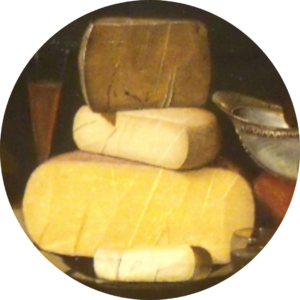Sauvignon Blanc is a French grape noted in Bordeaux and the Loire, both cool climates. These expressions are known for crisp acidity and often herbaceous notes. California kicks that bucket over, creating dozens of different styles from this single flexible grape.
Tasting notes
| Body | Light to medium body: high acidity, dry and low to moderate alcohol |
| Grape flavours | Citrus: lemon, grapefruit, and sometimes lime Green Apple Tropical Fruits: warmer regions give melon, passion fruit, guava, or pineapple |
| Winemaker flavours | Some wines have Oak Flavouring: subtle vanilla, toast, and spice notes |
| Aging | While typically enjoyed young, aging can grow mineral, herbal and grassy notes, with occasional threads of honey or nut |
About Californian Sauvignon Blanc
The story of Californian Sauvignon Blanc was first planted in the state in the 1800s. Its initial introduction can be attributed to immigrant winemakers who brought their expertise and vine cuttings from Europe. One of the earliest mentions of this varietal in California is connected to Charles Wetmore, who planted Sauvignon Blanc vines in Livermore Valley in the 1880s. Wetmore’s efforts paved the way for the development of Sauvignon Blanc in California, and his vineyard became a symbol of pioneering viticulture.
The 20th century saw Sauvignon Blanc cultivation throughout California. Sauvignon Blanc needs the cooler climates in the State to bring out its characteristic acidic crisp body. Notably,
- Oakville and Rutherford within Napa Valley
- Russian River Valley and Sonoma Valley in Sonoma County
- Santa Barbara County and Paso Robles in Central Coast
American Innovation
Over the years California has experimented. Diverse terroirs and winemaking approaches have led to a wide range of Sauvignon Blanc styles from zesty and grassy to lush and tropical. Some winemakers use stainless steel fermentation to preserve the grape’s natural acidity and freshness, others barrel age to add complexity and texture.
Tasting Notes for Californian Sauvignon Blanc
- Body: light to medium body. Crisp, clean and lively. on the palate, with a clean, lively mouthfeel that is characteristic of this varietal. The texture is generally smooth, making it an easy-drinking white wine. High acidity, dry and low to moderate alcohol
- Grape Flavours: bright, fruit-driven flavours
- Citrus: zesty lemon, grapefruit, and sometimes lime
- Green Apple
- Tropical Fruits: warmer regions can give melon, passion fruit, guava, or pineapple
- Winemaker flavours added: flavouring with oak is popular but not common. Malolactic conversion and Lees aging are rare
- Oak Flavouring: some producers experiment with oak barrels to impart subtle vanilla, toast, and spice notes
- Aging: typically enjoyed young. Where it is aged we see an expansions of mineral, herbal and grassy notes, with occasional honey or nutty threads
How California compares to other regions
The taste of Californian Sauvignon Blanc often varies significantly from other regions, such as those from France (particularly the Loire Valley and Bordeaux), New Zealand, and South Africa. It comes down to climate, terroir, winemaking techniques, and (honestly) personal preferences of the winemakers.
Differences in Californian Sauvignon Blanc:
- Climate and Terroir: California’s diverse climate and terroir contribute to the variation in Sauvignon Blanc taste. Regions like Napa Valley and Sonoma County tend to produce wines with bright acidity and citrus-driven flavors, while areas with warmer climates, like Paso Robles, may showcase riper fruit characteristics.
- Fruit Expression: Californian Sauvignon Blanc often leans towards ripe citrus and tropical fruit flavors, such as ripe pineapple, melon, and sometimes mango. These fruit notes can be more pronounced and sweeter compared to the pungent, gooseberry-like flavors found in New Zealand versions.
- Herbal and Grassy Notes: While Californian Sauvignon Blanc can exhibit some herbal and grassy characteristics, they are generally more subdued than those in New Zealand wines. Californian examples tend to focus on the fruit-forward aspects of the grape.
- Use of Winemaking Techniques: Californian winemakers may employ techniques like oak aging, malolactic conversion, or lees aging to add complexity and texture to their Sauvignon Blanc. These techniques can differentiate Californian Sauvignon Blanc from those produced in regions where such practices are less common.
France
- Loire Valley (Sancerre and Pouilly-Fumé): French Sauvignon Blanc from Sancerre and Pouilly-Fumé is often characterized by high acidity and a mineral-driven profile. These wines display vibrant citrus, green apple, and herbaceous notes. The terroir, with its limestone and flinty soils, imparts a distinct mineral quality to the wines.
- Bordeaux (Graves and Entre-Deux-Mers): Sauvignon Blanc from Bordeaux is often blended with Sémillon to create wines like White Bordeaux or Bordeaux Blanc. These blends tend to be less aromatic and have a more rounded, less aggressive acidity compared to Californian counterparts. They may exhibit subtle grassy and herbal notes.
New Zealand
- New Zealand Sauvignon Blanc, particularly from Marlborough: renowned for their intensely aromatic and pungent style. They burst with vibrant tropical fruit flavours, including passion fruit, gooseberry, and kiwi. New Zealand Sauvignon Blanc is known for its racy acidity and pronounced herbal and grassy notes, which can be more overt than those found in Californian versions.
South Africa
- South African Sauvignon Blanc: South African Sauvignon Blanc often falls between the styles of California and New Zealand. It typically features a good balance of acidity, fruitiness, and herbaceousness. The wine may offer tropical fruit flavours alongside green apple and herbal undertones. However South African Sauvignon Blancs can display a wide range of profiles due to the diversity of the Western Cape’s wine regions.
In summary, Californian Sauvignon Blanc stands out with its bright acidity, lush fruit flavours, and a balance between herbaceousness and fruitiness. While it shares some similarities with French, New Zealand, and South African interpretations, it often displays a distinct character influenced by California’s diverse terroirs and innovative winemaking approaches.


